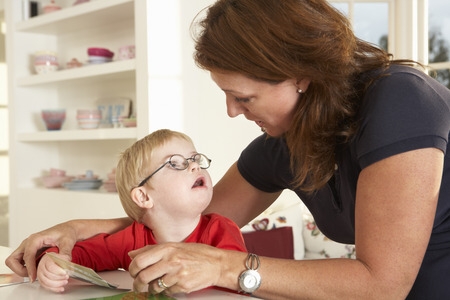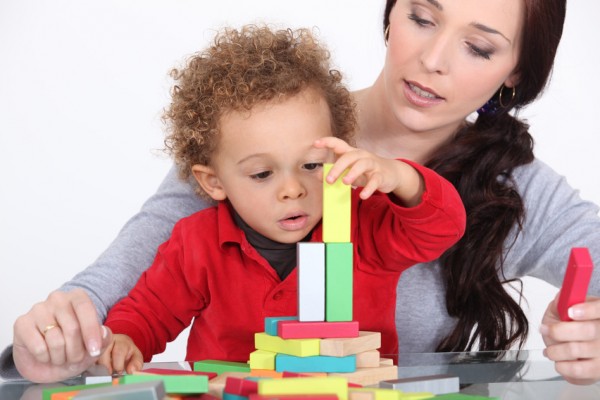Treatment Modalities
ABA

Applied behavior analysis (ABA) is the science of applying specific strategies and techniques to understand the functional relationship between behavior and environmental conditions. One of the primary goals in analyzing behavior is to understand the function of maladaptive responses, and consequently, teach individuals to employ more pro-social, adaptive behaviors that have a similar effect on the environment. Much of the time, this is taught to children using an extensive reward and reinforcement system. Such intervention is comprehensive and initial programs seek to remediate such areas as following directions, imitation (both verbal and motor), matching skills, and adaptive functioning. ABA often utilizes picture schedules as a visual prompt to make transitions from activities or tasks easier for the student to navigate throughout the day.
One important aspect of applied behavior analysis is an emphasis on the generalization of learned skills to alternate environments. To facilitate this, OBH supports frequent home visits by trained professionals to educate and assist parents in implementing strategies used in the classroom at home or in the natural setting. Such visits allow for consistency and regularity in the autistic child’s life, a factor crucial in facilitating functional behavior. For the program to be effective, the ABA approach requires steadfast dedication from both family members and the people who see the child on a daily basis. In order to maximize the effectiveness of all these different intervention services, OBH supports parents in becoming educated, involved, and motivated participants.
Perhaps the most important concept in ABA is that of generalization of learned skills to alternate (non-therapeutic) environments. To facilitate this, OBH supports two critical Services:
1. Ample BCBA Supervision:
Frequent home visits by Board-Certified professionals to educate and assist parents in implementing strategies used in the classroom at home or in the natural setting. Such visits allow for consistency and regularity in programming which is crucial in facilitating functional behavior. In order to maximize the effectiveness of all these different intervention services, OBH supports parents in becoming educated, involved, and motivated participants.
2. Clinic Setting:
Our onsite therapeutic clinic setting allows for socialization opportunities and peer interactions. Each child is afforded a one-on-one therapist that will help facilitate skills in interpersonal communication, age-appropriate play skills, reciprocal exchanges and other social behaviors that are a prerequisite to optimal growth and development. Home or clinic-based sessions (or a combination of these) are available and our staff will work to identify the most appropriate group for your individual child to join based on the particular needs and functional level of your child.
TEACCH

The Treatment and Education of Autistic and Related Handicapped Children (TEACCH) program was initiated in 1971 by Dr. Eric Schopler for the purpose of providing structure and continuity in the lives of children with developmental disabilities. Of primary importance to this intervention is effectively educating and training family members on how to manage and facilitate the child’s development. In this process, parents learn to establish routines and cues in the home that are consistent with those presented in the classroom setting, thereby providing opportunities for generalization of learned skills across settings.
Much of the TEACCH curriculum is individualized and unique to the particular child’s strengths and weaknesses and each child’s program is tailored to what both professionals and family members deem appropriate. Thus, this method adapts to the child’s learning environment and schedule to accommodate the child’s characteristics. For example, TEACCH commonly utilizes a picture schedule so that the child can anticipate responsibilities, future activities, and expectations. The resulting routine is thought to be most effective in reducing stress and tension, as well as avoiding surprises or unexpected demands that might cause a variety of difficult behaviors. However, the program’s emphasis is not limited to the acquisition of skills. Rather, it is a global or comprehensive treatment approach to vocational, social, and adaptive functioning.
Pivotal Response Training (PRT)

PRT is a child-directed naturalistic treatment that is derived from the principles of ABA. It utilizes the child’s motivation to increase attention and leads to the acquisition of “pivotal” behaviors (behaviors associated or central to a wide range of functional domains). Using shaping, positive reinforcement, turn-taking, and freedom of choice, PRT is applied in a natural context to increase and remediate language and communication skills, social interaction, and interpersonal relatedness, as well as appropriate developmental play skills.
Discrete Trial Training (DTT)

Discrete trial training is a teaching methodology which breaks down learning into small, incremental units so as to assist the learner in easily acquiring and maintaining the specific skill. As the learner incorporates each “discrete” unit into his/her repertoire, the therapist guides the learner in blending and combining these smaller units into more complex, functional behaviors. DTT has a solid research foundation and its effectiveness has been demonstrated in numerous studies. OBH effectively merges the principles of motivation and positive reinforcement to maximize the learner’s acquisition of pro-social, adaptive behaviors. DTT has been used to enhance numerous skill sets including language and communication, self-help, motor/body awareness, and cognitive processing. OBH utilizes such methodology to increasing attention, concentration, and focus, as well as to decrease excessive maladaptive behaviors.
Behavior Modification

Behavior modification is a treatment approach, based on scientific principles, that seeks to identify problematic behaviors and replace them with more functional, desirable responses. A strong behavior modification plan begins with a Functional Assessment to identify the circumstances that produce the targeted behavior. This assessment leads to a Behavior Support Plan that outlines both proactive and reactive techniques that focus on disengaging the maladaptive response while promoting/encouraging a more acceptable means of achieving the same result.
Parent Involvement

Research has indicated that when parents are active participants in their child’s functioning, both educationally and therapeutically, there are persistent beneficial effects to the child and the parent’s perceived quality of life. These findings imply that parental training must be a substantial component of early, intensive intervention. Thus, parental training and participation is a critical component of all services offered at OBH. While parental training may take many forms, parents typically need, above all, to be educated about their child’s composition and understand how aberrant behaviors patterns manifest. Subsequently, merging this education with guided observation, one-on-one sessions with the child, and coaching facilitated by a trained professional can produce happier, less stressed parents, as well as lasting behavioral changes in the child.
